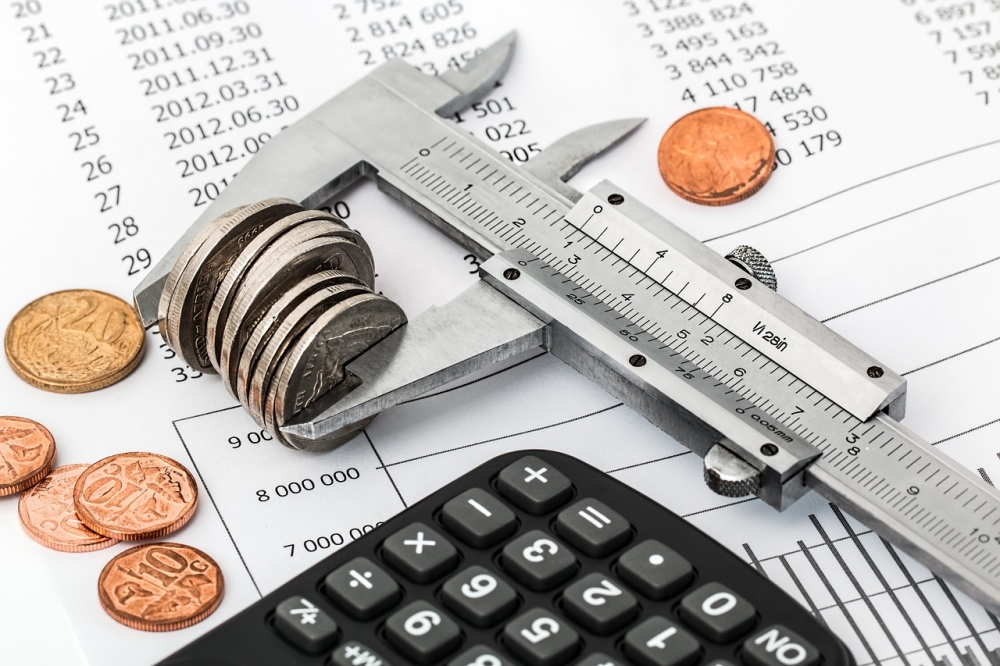Purchasing a home is a significant milestone in many people’s lives, representing stability, security, and a place to call your own. However, embarking on the journey of homeownership requires careful financial planning and preparation.
From saving for a down payment to budgeting for ongoing maintenance and repairs, there are crucial steps to consider to ensure a smooth transition into this new chapter.

In this article, we will guide you through the process of preparing for homeownership and establishing a solid financial foundation. We will explore various strategies to help you save for a house down payment, create a post-purchase budget that accounts for all the associated costs, and provide valuable insights into managing your finances as a homeowner.
Whether you’re a first-time homebuyer or looking to upgrade your current residence, these tips will prove invaluable in your pursuit of homeownership.
Throughout this guide, we will specifically focus on the context of Filipino homeownership and address the unique challenges and considerations faced by homeowners in the Philippines. From understanding the costs of home maintenance and repair to exploring investment opportunities, we aim to equip you with the knowledge and tools necessary to make informed financial decisions.
So, if you’re ready to embark on your homeownership journey and want to ensure a stable and financially secure future, let’s dive into the essential steps to take when preparing for homeownership and building a strong financial plan.
Assessing Your Financial Situation
Before diving into the process of homeownership, it is crucial to assess your current financial situation. This step will provide you with a clear understanding of your financial standing and help you make informed decisions throughout the homebuying journey.
By thoroughly evaluating your budget, expenses, and existing mortgage details, you can better prepare yourself for the financial responsibilities that come with homeownership.
Reviewing Your Budget and Expenses
The first step in assessing your financial situation is to review your budget and expenses. Take a close look at your income sources and track your monthly expenses meticulously.
This will give you a comprehensive view of your cash flow and allow you to identify areas where you can potentially cut back or make adjustments to save more effectively. Understanding your current spending habits is vital for creating a realistic home buying savings plan.
Identifying New Homeownership-Related Costs
While evaluating your financial situation, it is essential to factor in the additional costs associated with homeownership. These expenses include property taxes, insurance premiums, and potential increases in utility bills.
Research and gather information on the average costs in your desired location, taking into account any specific fees or taxes applicable in your area. Being aware of these expenses upfront will prevent any surprises and help you plan your finances accordingly.
Evaluating Your Mortgage and Interest Rates
If you currently have a mortgage or are considering obtaining one, it is crucial to evaluate your existing mortgage terms and interest rates. Determine whether refinancing your mortgage is a viable option to lower your monthly payments or reduce the interest you pay over time.
Understanding the terms of your mortgage and exploring potential adjustments will contribute to a more favorable financial position as a homeowner.
By thoroughly assessing your financial situation, including reviewing your budget, identifying homeownership-related costs, and evaluating your mortgage terms, you will gain clarity on your financial readiness for homeownership. Armed with this knowledge, you can proceed with confidence, knowing that you have a solid foundation from which to embark on your home buying journey.
Creating a Post-Purchase Budget

Once you’ve successfully navigated the process of purchasing your dream home, it’s essential to establish a post-purchase budget. This budget will help you effectively manage your finances and ensure that you can comfortably meet your ongoing homeownership expenses.
By allocating funds for mortgage payments, accounting for property taxes and insurance, factoring in maintenance and repair costs, and planning for unexpected expenses, you can maintain financial stability as a homeowner.
Allocating Funds for Mortgage Payments
One of the primary financial responsibilities as a homeowner is making regular mortgage payments. It’s crucial to allocate a portion of your monthly budget specifically for this purpose.
Consider the loan terms, interest rate, and repayment period to determine the appropriate amount to set aside each month. By consistently budgeting for mortgage payments, you can build equity in your home and ensure a smooth repayment process.
Accounting for Property Taxes and Insurance
Property taxes and homeowners insurance are recurring expenses that must be factored into your budget. Research the tax rates in your area and estimate the annual property tax amount.
Additionally, obtain quotes from insurance providers to determine the cost of homeowners insurance. By including these expenses in your budget, you can proactively plan for them and ensure you have the necessary funds when they become due.
Factoring in Maintenance and Repair Costs
Maintaining and repairing your home is an ongoing responsibility that comes with homeownership. It’s essential to allocate funds in your budget specifically for these costs.
Consider setting aside a certain percentage of your monthly income for routine maintenance tasks, such as HVAC system servicing or gutter cleaning. Additionally, establish an emergency fund to cover unexpected repairs that may arise.
By including maintenance and repair costs in your budget, you can prevent financial strain when these inevitable expenses occur.
Planning for Unexpected Expenses
Even with diligent budgeting, unexpected expenses can arise. It’s crucial to anticipate these situations and have a contingency plan in place.
Consider allocating a portion of your monthly budget to an emergency fund specifically designed to handle unexpected costs. This fund can serve as a financial safety net and provide peace of mind during challenging times.
By proactively planning for unexpected expenses, you can safeguard your financial stability and protect your homeownership investment.
By creating a comprehensive post-purchase budget that includes funds for mortgage payments, property taxes, insurance, maintenance and repair costs, and unexpected expenses, you can effectively manage your finances as a homeowner. This proactive approach ensures that you can maintain your property, handle unforeseen circumstances, and continue to enjoy the benefits of homeownership while staying financially secure.
Saving Strategies for Homeowners
Building and maintaining a healthy savings account is essential for homeowners. It provides a financial cushion, allows for future investments, and helps meet unexpected expenses.
Implementing effective saving strategies can significantly contribute to your long-term financial stability. Consider the following tips to enhance your savings as a homeowner.
Building an Emergency Fund
Establishing an emergency fund should be a top priority for homeowners. Set aside a portion of your income each month specifically designated for unforeseen circumstances.
Aim to accumulate at least three to six months’ worth of living expenses in your emergency fund. This fund will serve as a safety net in case of job loss, medical emergencies, or major home repairs.
By having this financial buffer, you can navigate unexpected challenges without compromising your financial well-being.
Setting Financial Goals and Timelines
Define your financial goals as a homeowner and establish timelines for achieving them. These goals can include paying off your mortgage early, saving for a renovation project, or investing in real estate.
Break down each goal into smaller milestones and set realistic deadlines. By having specific objectives and timelines, you can stay focused and motivated on your saving journey.
Exploring Long-Term Savings Options
Look beyond your immediate savings and consider long-term financial strategies. Explore options such as retirement accounts and college funds if applicable.
Contribute consistently to retirement accounts, such as 401(k) or individual retirement accounts (IRAs), to secure your financial future. For those with children, investing in college funds, such as 529 plans, can help cover education expenses down the line.
By incorporating these long-term savings options into your financial plan, you can ensure a well-rounded approach to your financial goals.
Tips for Cutting Expenses and Maximizing Savings
Identify areas where you can reduce expenses and maximize your savings potential. Review your budget regularly and evaluate discretionary spending.
Look for opportunities to cut back on non-essential items, such as dining out or subscription services. Consider negotiating bills, such as insurance or utility costs, to secure better rates.
Additionally, explore energy-saving initiatives within your home to reduce utility expenses. By adopting these cost-cutting measures, you can free up more funds for saving and future investments.
By implementing effective saving strategies, such as building an emergency fund, setting financial goals, exploring long-term savings options, and cutting expenses, you can enhance your financial stability as a homeowner. These strategies will not only provide a safety net but also open doors to future opportunities and financial growth.
Remember, consistent and disciplined saving is key to achieving your financial objectives and ensuring a secure future for you and your home.
Managing Home-Related Debts

As a homeowner, managing home-related debts effectively is crucial to maintaining your financial well-being and securing your investment. By employing smart debt management strategies, you can pay off your mortgage faster, consolidate and refinance debts, and prioritize payments to minimize interest rates.
Here are key tips for managing home-related debts:
Strategies for Paying Off the Mortgage Faster
Paying off your mortgage faster can save you a significant amount of money in interest payments over the long term. Consider making additional principal payments whenever possible, such as bi-weekly or extra payments each year.
Explore if your lender allows for mortgage acceleration programs that can help you reduce the overall term of your loan. Additionally, refinancing to a shorter-term mortgage with a lower interest rate can also expedite your mortgage payoff.
Consolidating and Refinancing Debts
If you have other debts, such as credit card balances or personal loans, consider consolidating them into a single loan with a lower interest rate. Debt consolidation can simplify your repayment process and potentially reduce your monthly payment burden.
Similarly, refinancing your existing debts, including car loans or student loans, may lead to more favorable terms and save you money in interest charges. Evaluate the costs and benefits of consolidation or refinancing options to determine the most suitable approach for your financial situation.
Prioritizing Debt Payments and Managing Interest Rates
It’s crucial to prioritize debt payments and manage interest rates effectively. Start by organizing your debts in terms of interest rates and outstanding balances.
Allocate more of your available funds towards debts with higher interest rates while making minimum payments on lower-interest debts. This strategy, known as the debt avalanche method, minimizes the overall interest you pay over time.
Alternatively, the debt snowball method involves paying off smaller debts first to build momentum and motivation. Choose the approach that aligns with your financial goals and personal preferences.
By implementing strategies to pay off your mortgage faster, consolidating and refinancing debts, and prioritizing payments based on interest rates, you can effectively manage your home-related debts. These debt management techniques will help you reduce financial stress, save money, and pave the way for greater financial freedom and stability as a homeowner.
Remember, proactive management of your debts is key to achieving long-term financial success.
Protecting Your Investment

As a homeowner, protecting your investment is of utmost importance. Safeguarding your property and mitigating potential risks can save you from financial losses in the long run.
By understanding homeowners insurance, evaluating the need for additional coverage, and implementing preventive measures, you can protect both your home and your financial well-being.
Understanding Homeowners Insurance
Homeowners insurance provides essential coverage for your property and belongings in case of unforeseen events, such as fire, theft, or natural disasters. Familiarize yourself with the details of your policy, including coverage limits, deductibles, and exclusions.
Ensure that your insurance adequately protects the value of your home and possessions. If you have any questions or concerns, consult with your insurance provider or seek professional advice to ensure you have the appropriate level of coverage.
Evaluating the Need for Additional Coverage
Depending on your location and specific circumstances, you may need additional coverage beyond standard homeowners insurance. For example, if you live in an area prone to flooding or earthquakes, consider obtaining separate flood insurance or earthquake insurance to protect against those specific risks.
Similarly, if you have valuable or high-risk items, such as expensive jewelry or artwork, you may need additional coverage through endorsements or separate policies. Assess your individual needs and evaluate whether additional coverage is necessary to adequately protect your investment.
Mitigating Risks Through Preventive Measures
Taking preventive measures can help reduce the likelihood of accidents, damage, and losses. Regularly inspect your property for potential hazards, such as faulty wiring, plumbing leaks, or weak structures.
Maintain your home by keeping up with routine maintenance tasks, such as cleaning gutters, servicing HVAC systems, and checking for signs of water damage. Install safety features, such as smoke detectors, carbon monoxide detectors, and security systems, to enhance the security of your home.
By being proactive and addressing potential risks, you can minimize the chances of costly repairs and protect the value of your investment.
By understanding homeowners insurance, evaluating the need for additional coverage, and implementing preventive measures, you can protect your investment and ensure the long-term financial stability of your home. Remember, investing in proper insurance coverage and taking proactive steps to mitigate risks will provide you with peace of mind and protect your most valuable asset—your home.
Exploring Investment Opportunities
Owning a home not only provides you with a place to live but also opens up avenues for exploring investment opportunities. By diversifying your investment portfolio, considering real estate investments, and seeking professional financial advice, you can make the most of your homeownership and potentially grow your wealth.
Diversifying Your Investment Portfolio
While homeownership itself is an investment, it’s important to diversify your portfolio beyond real estate. Consider allocating a portion of your savings towards other investment vehicles, such as stocks, bonds, mutual funds, or exchange-traded funds (ETFs).
Diversification helps spread the risk and can potentially enhance returns. Research different investment options and determine the level of risk and potential return that aligns with your financial goals and risk tolerance.
Considering Real Estate Investments
As a homeowner, you have firsthand experience in the real estate market, which can be advantageous when considering real estate investments. Explore opportunities such as purchasing rental properties, investing in real estate investment trusts (REITs), or participating in real estate crowdfunding platforms.
Conduct thorough research, analyze market trends, and evaluate potential risks and returns before making any investment decisions. Real estate can be a valuable addition to your investment portfolio and generate passive income over time.
Seeking Professional Financial Advice
Navigating the world of investments can be complex, and seeking professional financial advice can provide valuable insights and guidance. Consider consulting with a financial advisor who specializes in real estate or investment planning.
They can assess your financial goals, risk tolerance, and time horizon to develop a tailored investment strategy. A professional advisor can also help you stay informed about market trends, tax implications, and regulatory changes that may impact your investment decisions.
Exploring investment opportunities beyond homeownership allows you to diversify your portfolio and potentially grow your wealth over time. By diversifying, considering real estate investments, and seeking professional financial advice, you can maximize the benefits of homeownership and leverage your assets to build a more robust and profitable financial future.
Remember, investments involve risks, and it’s crucial to conduct thorough research and carefully assess each opportunity before committing your funds. Regularly review and adjust your investment strategies to align with your evolving financial goals and market conditions.
Reviewing and Adjusting Your Financial Plan

A solid financial plan is not a one-time creation but a dynamic framework that requires regular review and adjustment. As a homeowner, it is essential to consistently track and monitor your expenses, reassess your budget, and modify your investment strategies as needed.
By staying proactive and adaptable, you can ensure that your financial plan remains aligned with your goals and evolving circumstances.
Regularly Tracking and Monitoring Expenses
Tracking and monitoring your expenses is a fundamental aspect of maintaining financial stability. Regularly review your spending habits and compare them to your budget to identify any areas of overspending or potential savings.
Utilize personal finance tools or apps to simplify the process and gain a comprehensive view of your financial transactions. By consistently tracking and monitoring your expenses, you can make informed decisions and identify opportunities for improvement.
Reassessing and Adjusting Your Budget
Life circumstances and financial goals change over time, necessitating a reassessment of your budget. Periodically review your budget to ensure it reflects your current needs and priorities.
Adjust categories and allocations as necessary, accounting for changes in income, expenses, or savings goals. Consider any major life events, such as marriage, starting a family, or career advancements, that may impact your financial situation.
Flexibility in your budget allows for better adaptability and helps you stay on track towards your financial objectives.
Modifying Investment Strategies as Needed
The investment landscape is dynamic, and market conditions can change rapidly. Regularly review your investment portfolio and evaluate the performance of your investments.
Stay informed about market trends and consult with a financial advisor to determine if any adjustments or rebalancing are necessary. As your financial goals evolve, consider modifying your investment strategies to align with your changing circumstances.
Adapting your investment approach can help optimize returns and mitigate risks.
By consistently reviewing and adjusting your financial plan, you ensure that it remains relevant and effective in helping you achieve your goals. Regularly track and monitor expenses, reassess your budget to accommodate changes, and modify investment strategies as needed.
This proactive approach allows you to stay in control of your financial journey and make necessary course corrections along the way.
Remember, financial planning is an ongoing process that requires diligence and flexibility. Stay engaged with your financial goals and regularly review your progress to ensure you are on track towards a secure and prosperous future.
End Notes
In conclusion, preparing for homeownership and [pmns_ilnext]managing your finances[/pmns_ilnext] as a homeowner require careful planning, proactive strategies, and regular evaluation. By assessing your financial situation, creating a budget, implementing saving strategies, managing debts, protecting your investment, exploring investment opportunities, and reviewing your financial plan, you can establish a solid foundation for a successful homeownership journey.
Stay vigilant, seek professional advice when needed, and adapt as circumstances change to secure your investment and achieve long-term financial stability. Congratulations on taking these important steps towards homeownership and a prosperous future.






